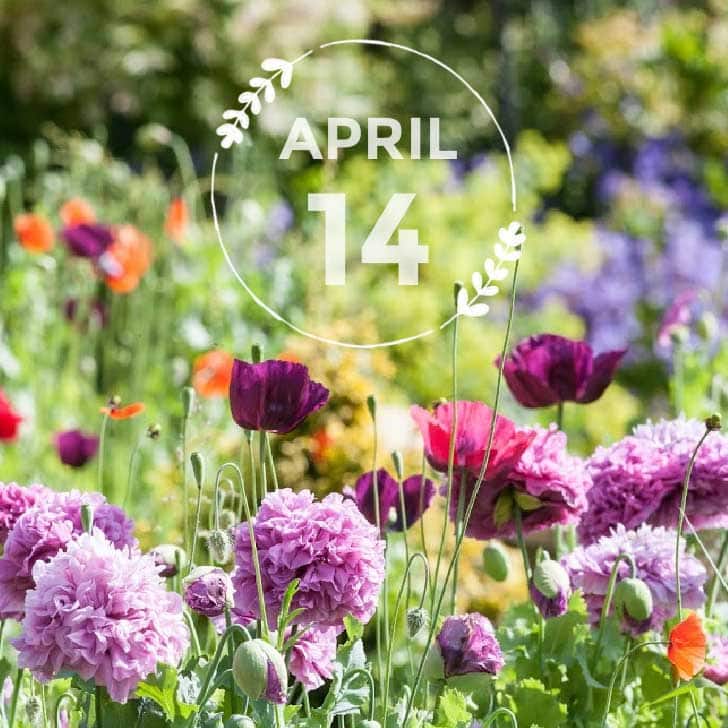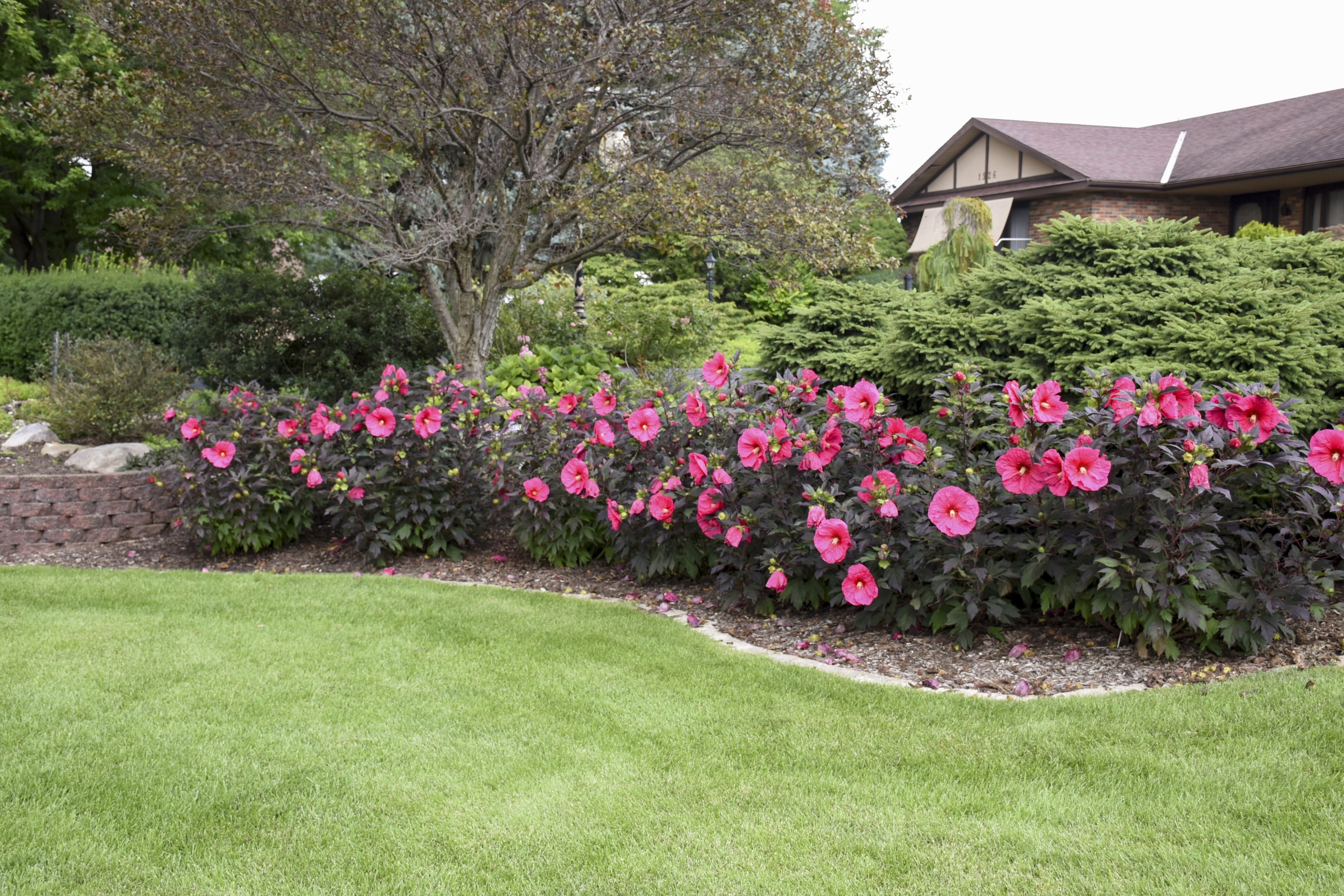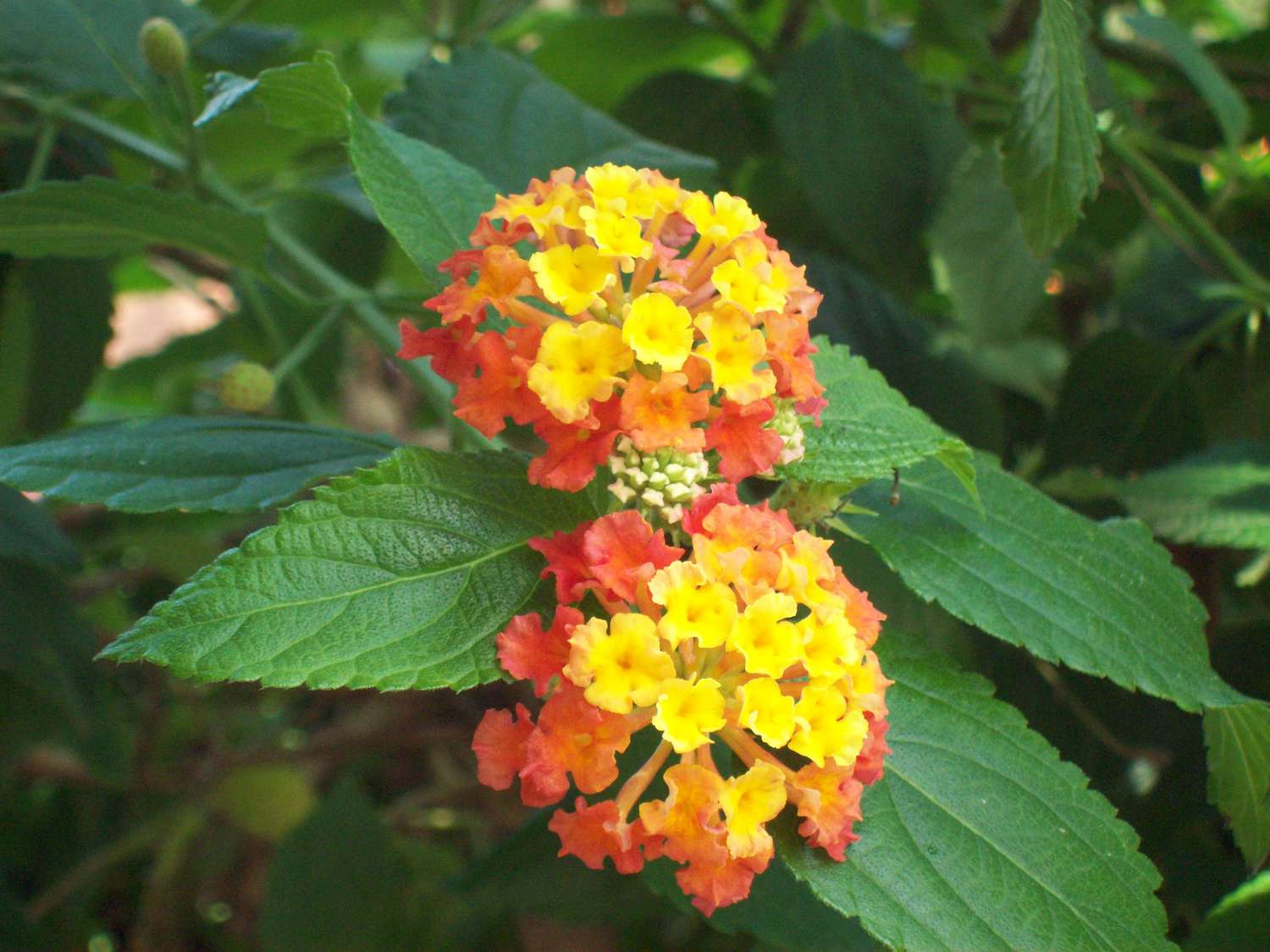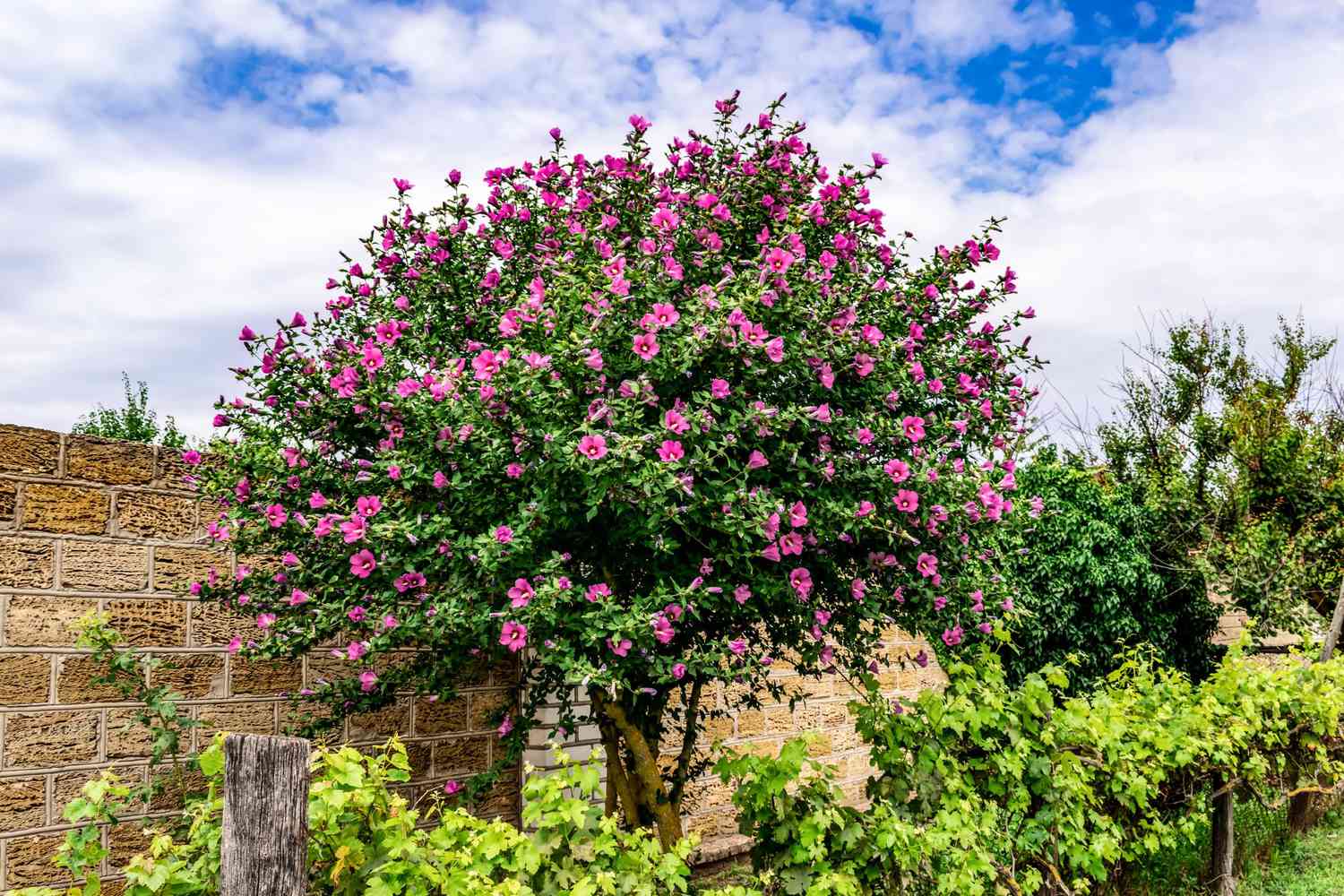A Beginner’s Guide to Successfully Planting and Nurturing Hibiscus Plants. Looking To grow vibrant hibiscus plants? Learn The basics of planting & nurturing with our beginner’s guide. Discover simple steps & tips for successful hibiscus care. Get started today!
Planting and Nurturing Hibiscus Plants
Planting Hibiscus Plants: A Beginners Guide
Introduction
Hibiscus plants are known for their vibrant & exotic flowers that add a touch of tropical beauty To any garden. If you’re a beginner gardener looking To cultivate these stunning plants, this guide is for you. In this article, we will walk you through The essential steps To successfully plant & nurture hibiscus plants. From choosing The right location To providing proper care, we’ll cover everything you need To know To ensure your hibiscus plants thrive.
Choosing The Right Location
To give your hibiscus plants The best chance To flourish, it’s crucial To select The right location for planting. Hibiscus plants thrive in full or partial sunlight, so choose a spot in your garden that receives sunlight for at least six hours a day. Additionally, make sure The soil is well-draining & enriched with organic matter. Avoid areas with heavy clay soil or poor drainage, as this can lead To root rot & stunted growth.
When planting hibiscus, it’s also important To consider The climate. These plants are tropical & prefer warm temperatures. If you live in a colder region, you can still grow hibiscus, but you may need To provide extra protection during The winter months. Consider planting them in containers that can be moved indoors when temperatures drop.
Preparing The Soil
Before planting your hibiscus, it’s crucial To prepare The soil properly. Start by clearing The area of any weeds or debris. Loosen The soil using a garden fork or tiller, ensuring it is well-aerated. Incorporate organic matter such as compost or well-rotted manure To improve soil fertility & drainage.
Planting Your Hibiscus
Now that you have chosen The right location & prepared The soil, it’s time To plant your hibiscus. Dig a hole that is twice as wide & just as deep as The root ball of The plant. Carefully remove The hibiscus from its container, gently loosening The roots if they are tightly bound. Place The plant in The hole, ensuring that The top of The root ball is level with The surrounding soil.
Backfill The hole with soil, firmly pressing it around The base of The plant To remove any air pockets. Water thoroughly To settle The soil & provide moisture To The roots. Add a layer of mulch around The base of The plant To conserve moisture & suppress weed growth.
Caring for Your Hibiscus
Once your hibiscus is planted, it’s important To provide proper care To ensure its growth & blooming. Here are some essential care tips To keep in mind:
1. Watering: Hibiscus plants require regular watering, especially during hot & dry periods. Water deeply, saturating The soil To encourage healthy root growth. Avoid overwatering, as this can lead To root rot. It’s better To water deeply & less frequently rather than shallowly & frequently.
2. Fertilizing: Hibiscus plants benefit from regular feeding. Use a balanced, slow-release fertilizer specifically formulated for flowering plants. Apply according To The package instructions, usually every four To six weeks during The growing season.
3. Pruning: Regular pruning helps keep your hibiscus plants healthy & promotes bushier growth. Prune in early spring before new growth appears, removing any dead or damaged branches. You can also prune lightly after each blooming cycle To encourage new flower production.
4. Pest & Disease Control: Keep an eye out for common pests such as aphids, mealybugs, & whiteflies. Treat any infestations promptly using organic insecticides or by spraying The plants with a strong stream of water. Additionally, ensure good air circulation around The plants To prevent fungal diseases.
5. Winter Protection: If you live in a colder climate, it’s important To protect your hibiscus plants during The winter months. Move potted hibiscus indoors or cover outdoor plants with a frost blanket or mulch To insulate them from freezing temperatures.
Experience with Hibiscus Plants
As a gardening enthusiast, I have had The pleasure of planting & nurturing hibiscus plants in my own garden. The vibrant blooms & lush foliage never fail To bring joy & beauty To my outdoor space. With proper care & attention, these tropical plants can thrive even in less-than-ideal conditions. By following The tips & guidelines outlined in this article, you too can successfully cultivate & enjoy The beauty of hibiscus plants.

Choosing The Right Hibiscus Plant
When it comes To planting & nurturing hibiscus plants, selecting The right plant is essential. There are various types of hibiscus plants availablePlanting and Nurturing Hibiscus Plants, such as tropical, hardy, & perennial varieties. Each type has its own specific requirements & characteristics, so it’s important To choose one that suits your climate & preferences.
Before purchasing a hibiscus plantPlanting and Nurturing Hibiscus Plants, consider The climate in your area. Tropical hibiscus plants thrive in warm & humid climates, while hardy hibiscus plants can survive in colder regions. Perennial hibiscus plants are a great option for areas with mild climatesPlanting and Nurturing Hibiscus Plants.
Planting and Nurturing Hibiscus Plants, you should also consider The size & color of The hibiscus flowersPlanting and Nurturing Hibiscus Plants. Hibiscus plants produce vibrant & attractive blooms in various colors, including red, pink, yellow, & white. Determine The size of The plant & its flowers based on The available space in your garden or patioPlanting and Nurturing Hibiscus Plants.
Preparing The Planting Site
Once you’ve chosen The right hibiscus plant, it’s time To prepare The planting site. Hibiscus plants prefer well-drained soil with a pH level between 6.0 & 6.8. If your soil is too acidic, you can add lime To raise The pH level. On The other hand, if your soil is too alkaline, adding sulfur can help lower The pH level.
Before plantingPlanting and Nurturing Hibiscus Plants, make sure To clear The area of any weeds or debris. Ensure that The planting site receives at least six hours of direct sunlight every day. If your area experiences strong winds, consider planting The hibiscus near a wall or fence To provide some protection.
It’s also important To dig a hole that is twice The width & depth of The hibiscus plant’s root ball. This will provide enough space for The roots To spread out & establish themselves.
Planting The Hibiscus
When planting The hibiscus, gently remove The plant from its pot & loosen The roots. Place The roots in The prepared hole & backfill with soilPlanting and Nurturing Hibiscus Plants, ensuring that The plant is at The same level as it was in The pot. Lightly tamp down The soil To remove any air pockets.
Water The newly planted hibiscus thoroughly To promote root establishment. Apply a layer of mulch around The base of The plant To help conserve moisture & suppress weeds. Mulch also acts as insulation during colder months.
To support The growth of The hibiscus plantPlanting and Nurturing Hibiscus Plants, it’s advisable To install stakes or a trellis nearbyPlanting and Nurturing Hibiscus Plants. This will help prevent The plant from becoming top-heavy & protect it from strong winds.
Nurturing The Hibiscus
Proper care & regular maintenance are crucial for The successful growth of hibiscus plants. Here are some tips To help you nurture your hibiscus plant:
Watering:
Water The hibiscus plant regularly, especially during dry spells. Ensure that The soil remains moist but not waterlogged. Avoid overhead watering, as this can lead To fungal diseases. Instead, water The plant at The base.
Fertilizing:
Feed your hibiscus plant with a balanced fertilizer during The growing season. Follow The instructions on The fertilizer packaging for The correct dosage. Over-fertilization can burn The roots, so it’s important To apply The fertilizer in moderation.
Pruning:
Prune your hibiscus plant To maintain a compact shape & promote blooming. Remove any dead or damaged branches & trim back excessive growth. Pruning should be done in late winter or early spring before new growth appears.
Pest Control:
Watch out for common pests, such as aphids, spider mites, & whiteflies, which can damage hibiscus plants. Regularly inspect The leaves & stems for signs of infestation. If necessary, use organic insecticides or soapy water To control The pests.
Winter Protection:
In colder regions, hibiscus plants may require winter protection. Before The first frost, trim back The plant To about a foot above The ground & cover it with a layer of mulch or straw. This will help insulate The plant & prevent frost damage.
Throughout my personal experience with hibiscus plants, I have found them To be a beautiful addition To any garden. Their vibrant blooms & lush foliage add a pop of color & create a tropical feel. With proper care & attention, you can successfully plant & nurture hibiscus plants in your own garden as well.
In conclusion, planting & nurturing hibiscus plants involves choosing The right plant, preparing The planting site, properly planting The hibiscus, & nurturing it through regular care. By following these steps & providing The necessary care, you can enjoy The beauty of hibiscus plants & their stunning blooms year after year.
| Aspect | A Beginner’s Guide To Successfully Planting & Nurturing Hibiscus Plants | Traditional Planting Methods | |
|---|---|---|---|
| Planting Requirements | Specific planting requirements based on hibiscus type & climate | General planting instructions for various types of plants | |
| Care & Maintenance | Detailed care instructions for watering, fertilizing, pruning, & pest control | Basic care tips for maintaining healthy plants | |
| Winter Protection | Guidance on protecting hibiscus plants during winter in colder regions | No specific instructions for winter protection |

How do I plant hibiscus plants?
Start by preparing a well-draining area in your garden with fertile soil. Dig a hole that is twice as wide & deep as The root ball of The hibiscus plant. Gently remove The plant from its container & place it in The hole. Backfill The hole with soil, making sure To firm it gently around The roots. Water The plant thoroughly after planting.
When is The best time To plant hibiscus plants?
The best time To plant hibiscus plants is in The spring, after The last frost date in your area. This allows The plant To establish its roots & grow during The warm months. However, you can also plant hibiscus in The fall, as long as there is enough time for The plant To establish before winter.
How often should I water hibiscus plants?
Hibiscus plants require regular watering, especially during hot, dry periods. Water deeply, allowing The water To penetrate The root zone. However, be careful not To overwater, as hibiscus plants do not like soggy soil. Monitor The moisture levels & adjust watering accordingly.
Should I fertilize my hibiscus plants?
Yes, hibiscus plants benefit from regular fertilization. Use a balanced fertilizer specifically formulated for flowering plants. Apply The fertilizer according To The package instructions, usually every 4-6 weeks during The growing season. Avoid overfertilization, as this can lead To unhealthy growth & fewer flowers.
How do I prune hibiscus plants?
Pruning hibiscus plants helps To maintain their shape, promote branching, & remove any dead or damaged growth. Use clean & sharp pruning tools To make cuts just above a leaf node or bud. Remove any crossed or crowded branches, as well as any suckers that may arise from The base of The plant. Pruning is best done in early spring before new growth begins.
What are some common pests & diseases that affect hibiscus plants?
Some common pests that can affect hibiscus plants include aphids, whiteflies, & spider mites. These pests can cause damage To The leaves & flowers of The plant. To control them, you can use insecticidal soap or neem oil. As for diseases, hibiscus plants are susceptible To fungal infections such as powdery mildew & rust. Proper air circulation, regular watering, & avoiding overcrowding can help prevent these diseases.
Can hibiscus plants be grown in containers?
Yes, hibiscus plants can be grown in containers, which makes them a great option for those with limited garden space. Choose a large pot with drainage holesPlanting and Nurturing Hibiscus Plants, & use a well-draining potting mix. Place The container in a location that receives at least 6 hours of sunlight per dayPlanting and Nurturing Hibiscus Plants. Regular watering & fertilizing are essential for container-grown hibiscus plants.

Conclusion
In conclusion, successfully planting & nurturing hibiscus plants can be an enjoyable & rewarding experience for beginners. By following The guidelines provided in this beginner’s guide, you can ensure that your hibiscus plants thrive & bloom beautifully.
Throughout this guide, we have emphasized The importance of understanding The specific needs of hibiscus plants, such as sunlight, water, soil, & fertilization. By providing these essentials in The right quantities & at The right times, you can create a healthy & vibrant environment for your hibiscus plants To flourish.
Planting and Nurturing Hibiscus Plants, we have discussed The significance of choosing The right type of hibiscus plant for your climate & space constraints. This ensures that your efforts will be well-matched with The specific requirements of The hibiscus variety you select, increasing The chances of successful growthPlanting and Nurturing Hibiscus Plants.
Planting and Nurturing Hibiscus Plants, patience is key when it comes To hibiscus plants. It takes time for them To establish their roots & start blooming. By regularly monitoring their progress & making adjustments as neededPlanting and Nurturing Hibiscus Plants, you can foster their growth & enjoy The beautiful flowers they produce.
Planting and Nurturing Hibiscus Plants, we encourage you To continue expanding your knowledge of hibiscus plants through further research & hands-on experiencePlanting and Nurturing Hibiscus Plants. This guide serves as a starting point, but there is always more To learn & discover about these captivating plants.
In conclusionPlanting and Nurturing Hibiscus Plants, hibiscus plants can be a wonderful addition To any garden or indoor space, & with The right care & attention, you can successfully plant & nurture them. Enjoy The processPlanting and Nurturing Hibiscus Plants, embrace The beauty of hibiscus plantsPlanting and Nurturing Hibiscus Plants, & watch your efforts blossom into a thriving garden. Happy gardening!
